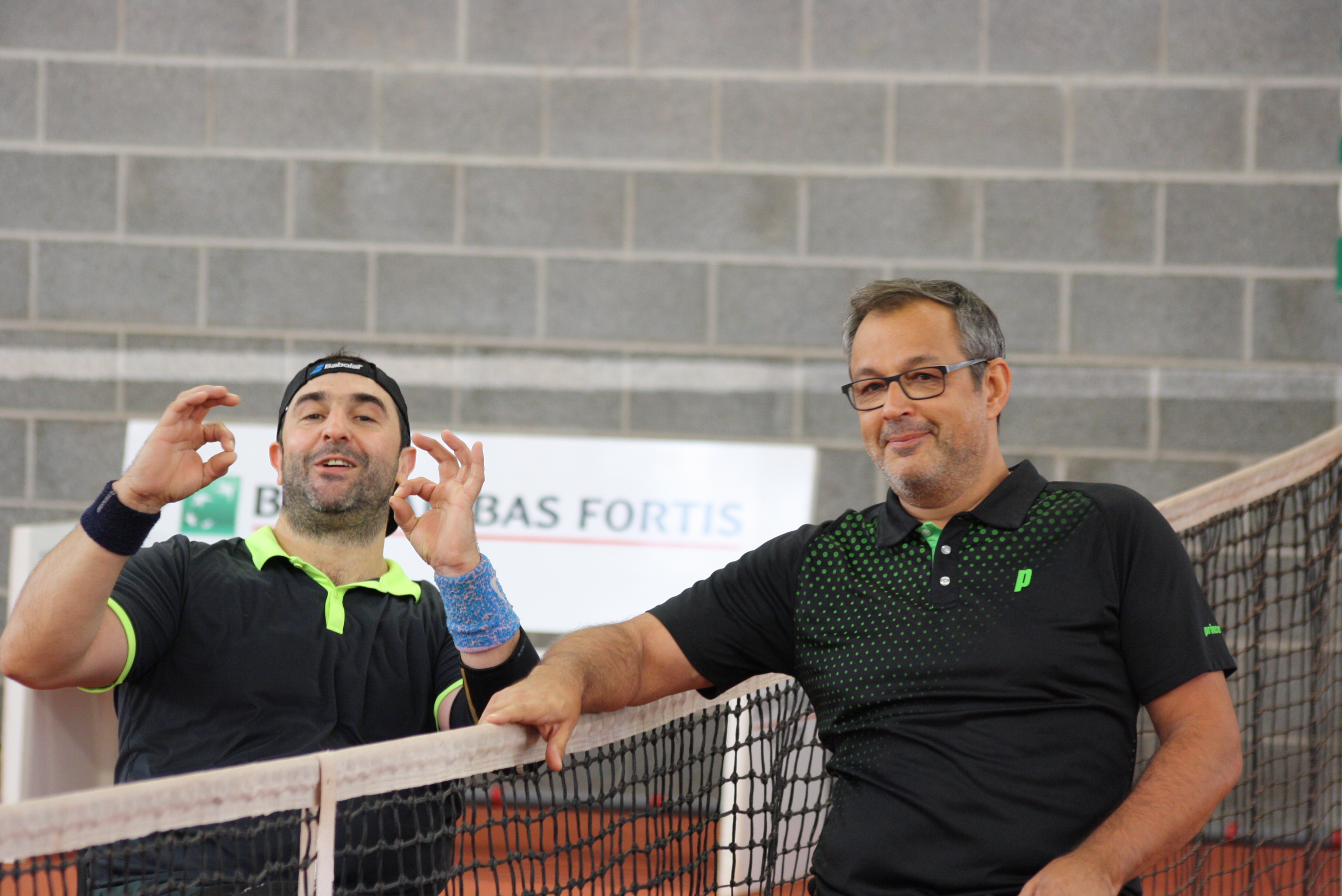Supported by A.D.E.P.S. (association of Francophone logistic authority) and the C.O.I.B. (Belgian Olympic Committee), the league of disabled sports (L.H.F.) which has its seat at Charleroi promotes the sport activities. Since 1998, the A.F.T. (Francophone Tennis Association) welcomes within its "able body" federation all wheelchair players, and putting in concrete form the idea of assimilating wheelchairs within the "able body" clubs. Since 2000, the F.R.B.T. (Royal Belgian Tennis Federation) has created as well within its Committee a Commission enabling a union of efforts from the North to the South and with the aim of realising a harmonious development of wheelchair tennis in Belgium. In 2001, the A.F.T. got associated with L.H.F. by founding a mixed Commission for wheelchair tennis and by joining in this way the possibilities of development of this discipline. Since 2004, the competitions reuniting Francophone and Flemish players were multiplied. So, a national criterium all over Belgium and composed of 10 tournaments. Physical disabled and in particular the ones who have lost the usage of their legs are dependant of a wheelchair for their activities and mobility. Following is a considerable arm development but also shoulders and torso, particularly impressive with sportsmen. This development improves the practice of certain sports among which tennis.
It is only in 1987 that tennis appeared in Belgium in disabled sports (in the USA in 1976).
The technique of tennis requests indeed a long and ungrateful apprenticeship and necessitates a dexterity in the steering of the wheelchair. It requires specific trainers. For a quick mobility, the player requires a light wheelchair, mobile, performing but… expensive (from 1.750 to 3.000 Euro). Despite the two categories created in world competition, following the nature of handicap, the chances of excelling are quite unequal. Finally, the contribution too high, the occasions of playing too reduced, the accessibility of the courts, club-houses or sanitary installations, the old aristocracy of tennis have been other obstacles to the birth of this adapted sport and to his development in the first years.
Today, the wheelchair tennis competition is not reachable to everybody : the wheelchair, the membership in a tennis club (125€), a racket with an eventual restringing (125€), tennisballs (40€ per season), occupation of a court 1 hour a week in winter period (125€), a weekly training session with 3 to 4 players during one hour (25€/month), transportation by car, drinks, clothes… It is always a huge budget for somebody already harmed by accident or handicap.
The rise of wheelchair tennis reaches now the hole country and especially the francophone region with more than 40 players and several clubs. Tennis forces the players to surpass themselves, to go beyond the unreachable limits. The faculty to hit the ball after two bounces allows the fast player to cover the whole court in order to be able to reach drop shots and even cross returns, and this on all surfaces.
Technical progress, work of trainers and multiplication of competitions have permitted two Belgian players to be placed in the world ranking (Top 10 in Women and in Men) while wheelchair tennis is being practised in about 70 countries. Wheelchair tennis is a way of recognition and a powerful springboard for rehabilitation. The player being physically and morally in full bloom melts in this way with the others in the society





